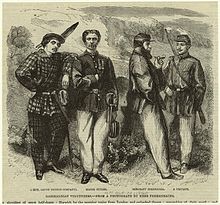
George Macaulay Trevelyan was a British historian and academic. He was a Fellow of Trinity College, Cambridge, from 1898 to 1903. He then spent more than twenty years as a full-time author. He returned to the University of Cambridge and was Regius Professor of History from 1927 to 1943. He served as Master of Trinity College from 1940 to 1951. In retirement, he was Chancellor of Durham University.

Edward Adolphus Ferdinand Seymour, Earl St. Maur, also 13th Baron Seymour in his own right, was a British aristocrat and soldier.

The Redshirts, also called the Red coats, are volunteers who followed the Italian patriot Giuseppe Garibaldi during his campaigns. The name derived from the colour of their shirts or loose-fitting blouses that the volunteers, usually called Garibaldini, wore in lieu of a uniform.

The Expedition of the Thousand was an event of the unification of Italy that took place in 1860. A corps of volunteers led by Giuseppe Garibaldi sailed from Quarto al Mare near Genoa and landed in Marsala, Sicily, in order to conquer the Kingdom of the Two Sicilies, ruled by the Spanish House of Bourbon-Two Sicilies. The name of the expedition derives from the initial number of participants, which was around 1,000 people.
Alfred Bate Richards (1820–1876) was an English journalist and author. He turned from law to literature and was the author of a number of popular dramas, volumes of poems, and essays. He was the first editor of The Daily Telegraph, and afterwards of the Morning Advertiser. He was one of the leading advocates for the volunteer movement.
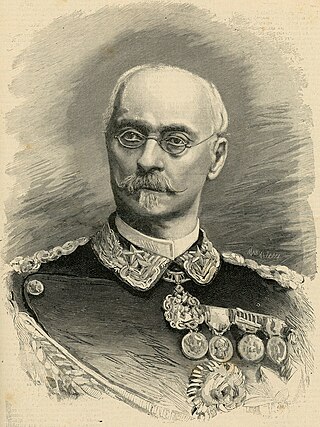
Enrico Cosenz was an Italian soldier born at Gaeta.

Jessie White Mario was an English writer and philanthropist. She is sometimes referred to as "Hurricane Jessie" in the Italian press.
The International Legion was created in Italy by Giuseppe Garibaldi, on October 5, 1860 – in the immediate aftermath of the Battle of the Volturno, where the forces of the Bourbon Kingdom of the Two Sicilies were decisively broken.

The Battle of Castelfidardo took place on 18 September 1860 at Castelfidardo, a small town in the Marche region of Italy. It was fought between the Royal Sardinian Army – acting as the driving force in the war for Italian unification, against the Papal States.
This is a timeline of the unification of Italy.
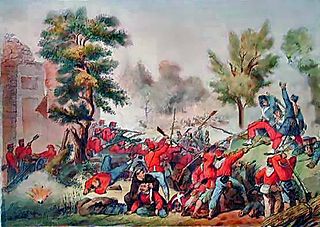
The Battle of the Volturno refers to a series of military clashes between Giuseppe Garibaldi's volunteers and the troops of the Kingdom of Two Sicilies occurring around the River Volturno, between the cities of Capua and Caserta in northern Campania, in September and October 1860. The main battle took place on 1 October 1860 between 30,000 Garibaldines and 25,000 Bourbon troops (Neapolitans).
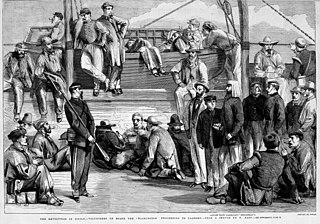
John Whitehead Peard (1811–1880) was a British soldier, renowned as 'Garibaldi's Englishman'. He was the second son of Vice-Admiral Shuldham Peard. At one point of his life he lived in Penquite, a manor house in rural Cornwall, near Golant on the River Fowey.

Giuseppe Maria Garibaldi was an Italian general, revolutionary and republican. He contributed to Italian unification (Risorgimento) and the creation of the Kingdom of Italy. He is considered to be one of Italy's "fathers of the fatherland", along with Camillo Benso, Count of Cavour, Victor Emmanuel II of Italy and Giuseppe Mazzini. Garibaldi is also known as the "Hero of the Two Worlds" because of his military enterprises in South America and Europe.

The Garibaldi Legion was a small unit of Italian volunteers who fought for Polish independence in the January Uprising of 1863. The unit was named after the Italian revolutionary and nationalist Giuseppe Garibaldi, organized in Italy by his son Menotti Garibaldi and led by the general Francesco Nullo.

The Italian frigate Giuseppe Garibaldi was a steam frigate of the Regia Marina of Italy. It was the first ship to be named after General Giuseppe Garibaldi.
The Matese Legion was a group of 240 Italian volunteers that joined Giuseppe Garibaldi in the war for Italian unification in 1861. It was formed in Piedimonte D'Alife, now called Piedimonte Matese, in June 1860, and was officially established on 25 August of the same year. Membership in the legion gradually declined, and it broke apart on 3 March 1861.
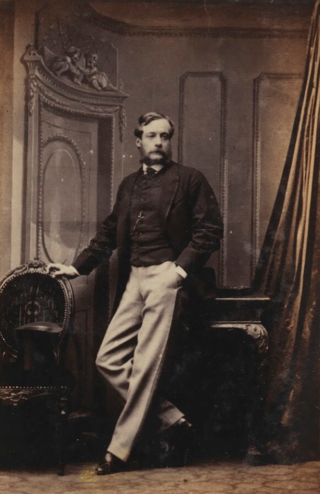
Thomas Durell Powell Hodge was an English supporter of Giuseppe Garibaldi, implicated in the Orsini affair of 1858. In later life he was called to the bar, and changed his name to Thomas Durell Blake.
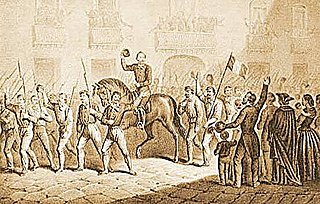
The Southern Army was the force of around 50,000 Italian and foreign volunteers which formed as a result of the Expedition of the Thousand. The name was coined by Giuseppe Garibaldi.

Giovanni Antonio Riso (Notarbartolo) (1836-1901), Baron of Colòbria, was a Sicilian patriot active in the Unification of Italy and scion of one of the wealthiest families in 19th-century Palermo Sicily.
